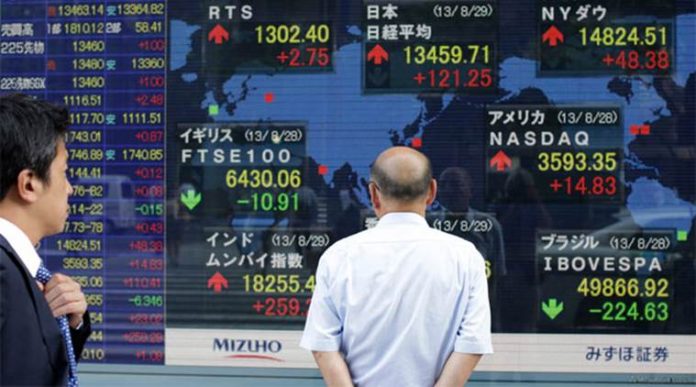Asian markets were mostly up Wednesday after suffering a diabolical first quarter, while traders weigh trillions of dollars in global stimulus with the prospect of lengthy lockdowns as the coronavirus continues its deadly sweep across the planet.
With the number of infected and dead still surging in Europe and the United States, hopes are fading that strict containment measures keeping billions of people at home will be lifted any time soon. That, in turn, is stoking uncertainty about the outlook for the global economy, which is widely expected to slip into recession this year, while there are also concerns about how long any recovery will take.
Donald Trump said he was extending social distancing and stay-at-home orders for another 30 days to the end of the month, while members of his virus task force warned almost a quarter of a million Americans could die from the disease. “The demand shock for oil and for the global economy more broadly will be more significant if mobility and social interaction restrictions stay in place beyond April,” said AxiCorp’s Stephen Innes.
“The real question for investors isn’t how shockingly bad the first quarter is going to be — sadly that’s a given — it’s how long the weakness will persist and, as a consequence, how much permanent damage will be done.” He added that “while the full effects of these disruptions are not yet evident, it is clear that the economy is experiencing the most abrupt and severe contraction since the Great Depression”.
And Rodrigo Catril, of National Australia Bank, said in a note: “Overall, there seems to be an increased risk that markets are underestimating the length containment measures will be implemented across the globe. China and now Italy are also showing that the removal of these containment measures will be slow.”
Still, there has been a little good news, with fresh data Wednesday showing another surprise return to growth in China’s factory sector. The Caixin purchasing managers index last month came in slightly above the 50 mark that separates growth from contraction, having hit a record low in February.
The figure came a day after an official reading that also came in well above forecasts, providing hope the world’s number two economy is slowly grinding back to work after a long lockdown. In early trade, Shanghai edged up 0.1 percent and Sydney rallied more than three percent, with Seoul flat. Taipei added 0.2 percent, Manila gained 0.8 percent and Wellington one percent.
However, Tokyo went into the break down 0.9 percent after a closely watched survey by the Bank of Japan showed confidence among the country’s major businesses had fallen into negative territory for the first time since 2013. Hong Kong lost 0.6 percent, with HSBC plunging more than six percent after scrapping its dividend and warning of a severe impact to revenues.
While there remains a lot of uncertainty on markets, and further turmoil is forecast, the past week has seen some stability return to trading floors, thanks to the massive stimulus pledges. Most indexes across the planet lost around a fifth of their value over the past three months. Oil was flat, as Saudi Arabia began ramping up output of the black gold as it presses on with a price war with Russia. However, there was some support after Trump said the two would hold talks, as he frets over the hit to US energy firms from the plunge in the crude market. “They’re going to get together and we’re all going to get together and we’re going to see what we can do,” Trump said. “Because you don’t want to lose an industry. You’re going to lose an industry over it.”
However, Innes added that the Saudi decision to boost output “is yet another signal that Saudi is digging in. The risk remains skewed to the downside for oil until this changes, and/or COVID-19 news flow turns positive”.




